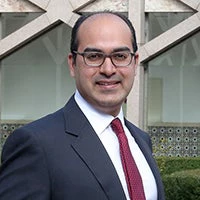 Des mesures ont été prises et plusieurs pays de la région MENA enregistrent déjà d’importants progrès au niveau de leur plan national de vaccination.
Des mesures ont été prises et plusieurs pays de la région MENA enregistrent déjà d’importants progrès au niveau de leur plan national de vaccination.
The criticality of a successful roll-out of COVID-19 vaccines cannot be overstated. With daily cases at an all-time high globally, vaccines are emerging as the most powerful tool to protect lives and livelihoods and bring an end to the pandemic. Fortunately, multiple vaccine candidates have received emergency use authorization and are being rolled out around the world.
However, the path from proof of safety and efficacy in clinical trials to fully immunized populations is long and complex (see "Vaccines Aren’t the End of the Fight, but the End of the Beginning"). In preparing to deploy vaccines to their citizens on an unprecedented scale, governments must improve end-to-end readiness of their health care systems, both for the immediate task of operationalizing the vaccination campaign and for the long-term, as we adapt to the possibility of living with COVID-19 as an endemic disease. All of this must be done at an unparalleled speed and scale, under intense public scrutiny, and in the face of extreme uncertainty.
The Middle East and North Africa region (MENA) has been significantly affected by the pandemic, with over 2.75 million confirmed cases in the region to date. In response, various MENA countries are already making significant progress on the strategy and procurement elements of their national vaccine plans — ten MENA countries having already launched vaccination campaigns.
In this context, the World Bank is organizing a series of workshops to help MENA countries think through the most strategic issues in COVID-19 vaccination and learn from one another. Below, we lay out the four key elements to consider when planning an end-to-end vaccination deployment which was presented in the first workshop. Other topics will be discussed in more depth in future posts as the we proceed with the workshop series.
1. Vaccine Strategy
Vaccine strategies hinge on governments defining clear objectives for the short, medium, and long terms. These objectives help to define the priority populations for vaccination, which vaccines are most appropriate in the national context, expected supply and demand, deployment requirements, and possible scenarios that may play out. Strategies must be supported with appropriate regulations, an operational plan and a good monitoring system to track progress of the vaccination campaign to ensure efficient and equitable access.
2. Procurement
Global supply of COVID-19 vaccines in 2021 is expected to fall short of demand even in the best-case scenario. While the need to procure vaccines is pressing, each vaccine has its own deployment implications including prices, regimen, storage, transportation, and administration. Procurement decisions must be informed by assessments of such deployment implications and the country’s health system capacity. For example, some countries have chosen vaccines which do not require ultra-cold chain.
3. Distribution
Supply chain readiness is a critical issue for all countries — existing immunization supply chains might not be well equipped to manage the distribution of COVID-19 vaccines. Three key issues to consider are cold chain sufficiency, last mile logistics, and ancillary supplies. Some of the "wave 1" vaccine candidates have highly stringent supply chain requirements such as ultra-cold chain. Even for vaccines that have standard cold chain requirements, challenges include matching vaccine doses with ancillary supplies, enabling traceability of scarce resources, ensuring supply availability for administration of second dose, and enabling throughput of volumes higher than standard immunization campaigns.
Strengthening the health system is central to efficient distribution. Countries must consider levers to rapidly mobilize the health workforce for vaccination and enhance data systems required for vaccine and beneficiary tracking and ongoing pharmacovigilance.
Community acceptance of, and demand for, vaccines must be improved through well designed communication campaigns taking into account behavioral insights. Targeted communications for selected population segments may be needed to address misinformation and misperceptions.
4. Funding
Governments should estimate the total costs for vaccine procurement and distribution in different scenarios and plan accordingly. On the basis of costing, an analysis of fiscal space should be conducted. Central to this is an assessment of options and tradeoffs for mobilizing domestic and external funds, including opportunity costs, considering the need to maintain a balanced vaccine portfolio.
However, there are key uncertainties inherent to rolling out a new vaccine, for which contingencies must be made. For example, costs would significantly increase in cases of a shorter than expected duration of vaccine protection or weaker vaccine protection against emerging variants.
Planning for the Future: Adaptation and Health System Strengthening
The COVID-19 pandemic has exposed weaknesses in all health systems and has created challenges that will last long after vaccines have been rolled out. Countries will need to consider how vaccination is part of their broader COVID-19 response strategy and what this means for recovery. Meanwhile, planning for mid-to-long term must address adaptation to COVID-19 as an endemic disease, which will require extensive health system strengthening, integration of COVID-19 vaccination into routine vaccination schedules, and analysis of the long-term costs to health care systems.







Join the Conversation